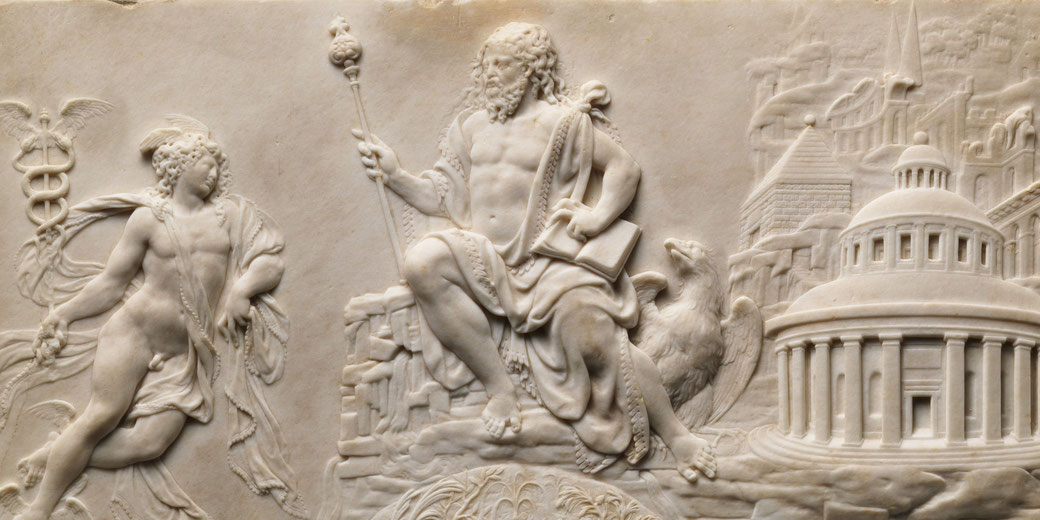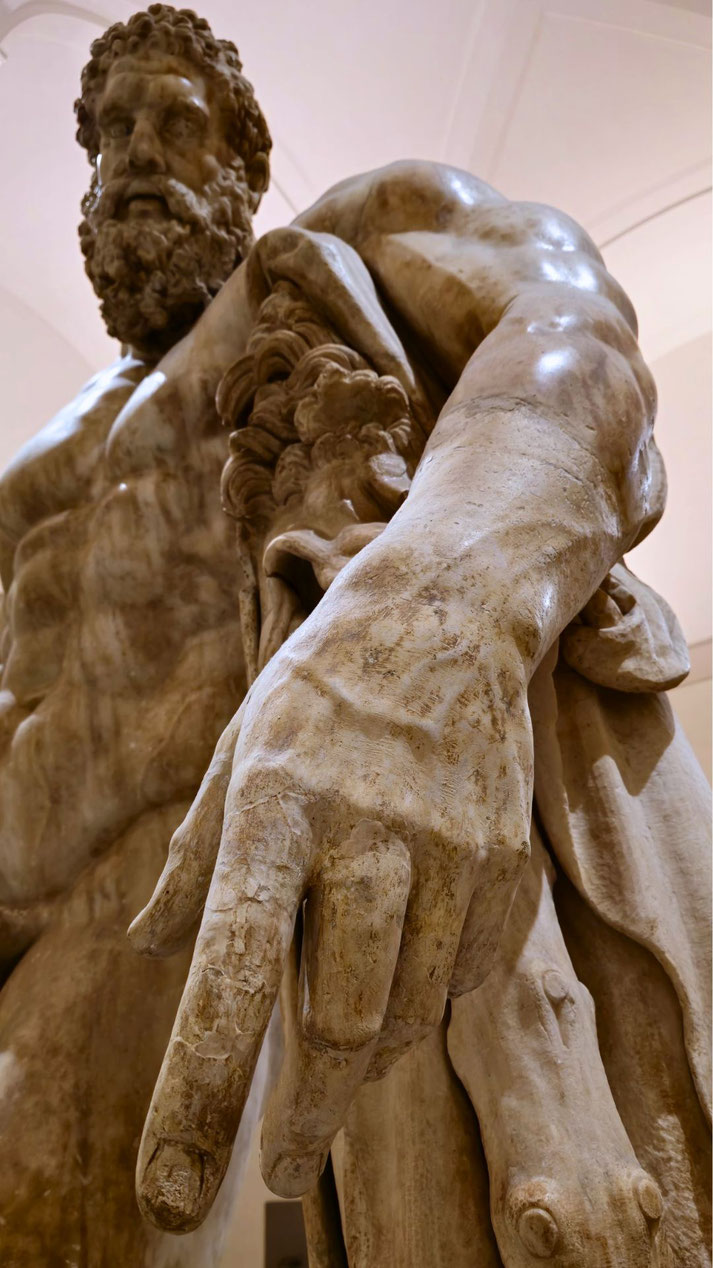Why are the Roman and Greek gods almost exactly the same?

Ancient Rome and Greece shared a lot more than just military and diplomatic interactions, especially in cultural and religious matters.
Thanks to a rante of cultural contact and religious exchanges, the Roman pantheon largely came to mirror the Greek one in many respects.
Names changed, but many roles and personalities preserved in mythic stories largely remained intact.
The early form of Roman religion
Romans in the earliest period practised a form of animism in which people called the spiritual forces numina and believed they inhabited natural features, household objects and even abstract concepts.
Instead of worshipping gods with human traits or mythic backstories, they conducted rituals to maintain peaceful relationships with these unseen powers.
The emphasis lay on the correct performance of rites that typically ensured crops remained healthy, households stayed secure and military campaigns succeeded.
For example, farmers commonly venerated Ceres for grain growth, soldiers prayed to Mars for battlefield protection and families honoured Vesta to safeguard the hearth.
The state maintained these religious rites with strict official oversight, and failure to perform rituals correctly risked inviting disaster.
In temples, the rituals followed strict legal form, with pontifices enforcing sacred law and keeping the religious calendar, while augurs typically interpreted omens such as bird flights or lightning to determine divine favour.
Because the gods did not have detailed stories or visible forms for many Romans, the early Roman pantheon seems to have remained functional and impersonal.
Without a body of myths, epics or drama to explore the gods' personalities, Roman religion left a cultural vacuum, which the later absorption of Greek mythology easily filled.
The Hellenization of Roman religion
Roman contact with the Greek world increased during the fourth and third centuries BCE as Rome expanded into Magna Graecia, the southern region of Italy where Greek colonies had thrived for centuries.
In cities such as Neapolis, Tarentum, and Cumae, Roman soldiers and merchants encountered Greek temples, oracles, sculptures, and myths.
This exposure brought new religious forms and a style of divine storytelling that broadly appealed to Roman leaders.
Roman conquest of Tarentum in 272 BCE and the eventual sack of Corinth in 146 BCE brought Greek cultural treasures directly into Roman hands.
Soon, Roman generals had brought back plundered artworks from the Greek world, which often included statues of gods and reliefs from temples.
As Rome expanded into the Hellenistic kingdoms of the eastern Mediterranean during the second century BCE, it came into possession of entire cultural centres where religion and art had developed together for generations.
Temples in cities like Athens, Corinth, and Ephesus had commonly displayed scenes from epic poetry and mythology, and many of these were transported to Rome as trophies.
More importantly, Roman poets, playwrights, and historians gradually began translating Greek literature into Latin, which brought the stories of Homer, Hesiod, and Euripides to a Roman audience.
Writers such as Livius Andronicus had translated the Odyssey into Latin as early as 240 BCE, and later authors like Virgil and Ovid reworked Greek mythology in the Roman tradition.
Eventually, the Roman state began identifying its native gods with the Greek deities.
Jupiter was equated with Zeus as king of the gods, and Juno took on the attributes of Hera.
Mars was identified with Ares, though he held a more dignified and central role in Roman religion than Ares ever did in Greece, and Minerva was now paired with Athena and retained and expanded her associations with wisdom, war strategy and crafts that had already existed in Roman tradition prior to full Greek alignment.
This process was known as interpretatio Romana and allowed Roman religion to adopt Greek narratives and keep its public rituals and ceremonial focus.
The same practice also applied outside Greece, as the Romans identified Celtic, Germanic and Egyptian gods with members of the Roman pantheon.
Because the Romans had added Greek myths onto their existing divine structure, Roman religion acquired narrative content without losing its political or ritual identity.
Major similarities between Greek and Roman gods
After the process of Hellenisation had become established, the Roman pantheon closely resembled its Greek counterpart in terms of structure and the narratives that defined divine roles and mythological content, though some uniquely Roman religious attitudes and native cults continued beneath this surface similarity.
Both cultures recognised a primary group of twelve Olympian gods who ruled over aspects of nature, society, and fate.
They lived atop Mount Olympus, often got involved in human affairs, and appeared in stories that involved divine jealousy, vengeance, trickery, and affection.
Jupiter resembled Zeus and ruled the skies, held the thunderbolt and presided over law and order, while Mars took on the ferocity of Ares, yet in Roman eyes, he also embodied discipline and patriotic duty.
Venus, associated with Aphrodite, governed beauty and love as expressed through fertility rites, while Neptune, mirroring Poseidon, ruled the seas and caused earthquakes.
Apollo remained unchanged in name and retained his association with music and healing, which included a role in prophecy.
Likewise, Diana and Artemis shared lunar and hunting attributes. Mercury replaced Hermes as messenger of the gods, Demeter became Ceres as goddess of grain, and Vulcan, derived from Hephaestus, handled fire and metalwork.
Hades had a smaller role in Roman worship and was nonetheless reflected in Pluto, who was more commonly associated with wealth and the fertile depths of the earth than with active rulership over the dead.
For example, Heracles became Hercules, and his twelve labours remained unchanged in content, though Roman adaptations often altered the tone and moral interpretation of the hero's exploits.
The Trojan War saga was central to Greek identity and became a Roman foundation myth through Virgil's Aeneid, which told of Aeneas' flight from Troy and his divine mission to found Rome.
In Roman temples, statues of gods followed Greek artistic models, and public festivals often featured Greek-style plays, games, and sacrifices.
Religious festivals such as the Ludi Apollinares drew inspiration from Greek ritual forms, while Saturnalia remained uniquely Roman.

Key differences between the Greek and Roman deities
Although the Roman gods absorbed Greek personalities, they did not always behave in the same manner.
The Greek gods acted with intense emotional variability: they fell in love, raged with jealousy, plotted revenge, and intervened frequently and often unpredictably in human lives.
Their myths raised philosophical questions and showed the gods as flawed and human-like.
Because Roman religion remained more formal and focused on public life, with an emphasis on moral conduct, Roman deities were generally expected to act with self-control and clear purpose, fulfilling their duties in line with Roman values.
Mars, though equated with Ares, lost the reckless brutality and gained respectable attributes connected to Roman military discipline.
Venus became a goddess of physical beauty who also embodied motherly devotion, family lineage and diplomacy, especially through her association with Aeneas and the Julian family.
And, since the Roman state continued to use religion as a tool of social and political control, ritual took priority over belief, and the act of sacrifice or augury mattered more than the myths behind it.
The gods generally promoted loyalty and duty that reinforced civic unity, rather than provoke philosophical contemplation.
Although myths remained popular, they had less influence on public religious behaviour than the structured rites conducted by priesthoods, magistrates, and emperors.
Instead of constructing detailed family histories, the Romans simplified family ties among the gods. Greek theology often explored origin myths and divine generations.
Tehrefore, Roman religion placed less emphasis on those ideas. Mythology provided background information, but it rarely governed how Romans worshipped.
Uniquely Roman gods
Despite the overwhelming presence of Greek mythology in Roman religion, a number of deities retained their unique Roman identity and continued to receive special worship.
Janus was the two-faced god of beginnings and transitions and had no equivalent in the Greek pantheon.
He watched over doorways, thresholds, and the start of wars or political terms, and he received prayers at the start of every ritual.
Likewise, Vesta was the goddess of the hearth and remained uniquely Roman in her cult and ritual significance.
Her temple in the Roman Forum housed the eternal flame of the city, and the Vestal Virgins were traditionally bound by thirty years of celibacy and public service and performed duties unmatched in Greek society.
The symbolic connection between household life and the state, and the divine order that joined them, was maintained through Vesta's worship.
Meanwhile, Quirinus was a deity associated with Romulus and survived as a symbol of Rome's divine origin and military identity.
He stood apart from the Olympians and embodied the mythical foundation of the Roman state.
The Lares and Penates were household gods who protected the family and pantry and who remained part of daily worship and preserved continuity between ancestors and descendants.
Eventually, new divine figures appeared that had no place in Greek religion. The Imperial Cult, which honoured deified emperors, combined religious ceremony with political loyalty.
Because Augustus became Divus Augustus after his death and temples were erected in his honour across the empire, the Ara Pacis, or Altar of Peace, was built in 13 BCE and celebrated Augustus' divine favour and role in restoring order.
This practice strengthened imperial authority and helped emperors to connect their power to divine approval.
As a result, even as Roman religion adopted the gods and myths of Greece, it preserved older traditions, maintained ritual structures, and developed new religious forms that expressed Roman values.
Ultimately, the apparent similarity between the Roman and Greek gods resulted from cultural borrowing, but the Roman system remained distinct in its purpose and civic orientation, together with a persistent emphasis on duty over emotion.
What do you need help with?
Download ready-to-use digital learning resources
Copyright © History Skills 2014-2025.
Contact via email
With the exception of links to external sites, some historical sources and extracts from specific publications, all content on this website is copyrighted by History Skills. This content may not be copied, republished or redistributed without written permission from the website creator. Please use the Contact page to obtain relevant permission.





